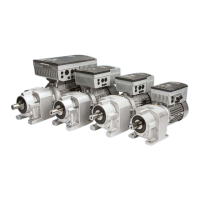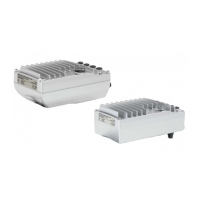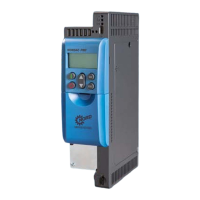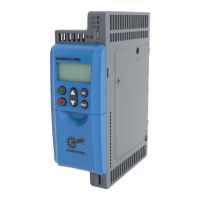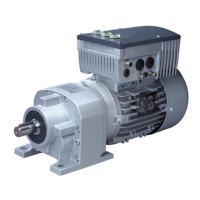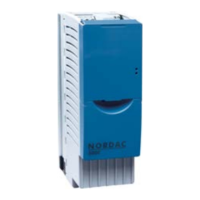4 Function description
BU 0210 en-3117 45
Pos: 168 /A nleit ung en/El e ktr onik /POS ICON /4. F unk tio nsbes chr eib ung/ Glei c hlauf /! Gleic hl aufr eg elung @ 14\mod_1478592362656_388.docx @ 2302189 @ 2 @ 1
4.9 Synchronous control
Positioning or synchronised running depends on the fact that all of the relevant devices communicate
via a common bus (system bus). The master device transmits its "actual position Position" and its
"actual setpoint speed after frequency ramp" to the slave device(s). The slave devices use the speed
as specified and compensate the remainder via the position control. The transmission time for the
actual speed and position from the master to the slave devices generates an angular or positional
deviation which is proportional to the speed of travel.
ΔP = n[rpm] / 60 * Cycle time [ms] / 1000
With 1500 rpm and a transmission time of approx. 5ms, a deviation of 0.125 rotations or 45° results.
This deviation is to some extent adjusted for by an appropriate compensation by the slave. However,
there is still a jitter (fluctuation) of approx. 1ms in the cycle time, which cannot be compensated for. In
the case selected, there remains an angular error of approx 9°. This only applies if a system bus- baud
rate of at least 100kBaud is used to couple the two drive units. Coupling with a lower baud rate
increases the deviation considerably and is therefore not recommended.
Coupling of the drive units via system bus enables the simultaneous operation of CANopen absolute
encoders. However, care must be taken that this network does not contain more than 5 slave
frequency inverters. This is the only way to ensure that the bus load remains below 50% and a
deterministic behaviour remains ensured.
Pos: 16 9 /Allg emein/ Allg emeing ültig e Mod ule/---------Sei tenumbr uch ko mpakt --------- @ 13\mod_1476369695906_0.docx @ 2265495 @ @ 1
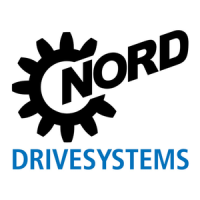
